
According to the World Cancer Research Fund, endometrial cancer is a common gynecologic malignancy in the United States, with more than 60,000 cases reported in 2020.
A 2020 British study found that small amounts of cannabis may fight endometrial cancer by reducing cancer cell viability.
In addition to the anti-cancer properties of cannabis, it also offers support in alleviating many of the adverse effects that come with conventional cancer treatments. The key lies in microdosing cannabis, which offers predictable, reliable results, and avoids the dangers of higher doses.
Try our low-dose THC gummies and experience a natural way to manage symptoms and enhance your quality of life during treatment.
Understanding endometrial cancer
Endometrial cancer begins in the lining of the uterus, called the endometrium. It is the most common gynecologic cancer in postmenopausal women, although it can occur in younger women as well. The most common type of endometrial cancer is adenocarcinoma, which forms from the glands in the endometrium.
Endometrial cancer is sometimes called uterine cancer because it is the most common type of cancer that develops in the uterus. It accounts for more than 90% of all uterine cancers.
According to the Roswell Park Cancer Center, the overall 5-year survival rate for women with endometrial cancer in the U.S. is 81%, with a 95% survival rate when detected early. Fortunately, endometrial cancer is often found at an early stage because it frequently causes obvious symptoms, which prompts women to seek medical attention.
What are the symptoms of endometrial cancer?
Endometrial cancer often causes symptoms in its early stages, which can help with early detection and treatment. Symptoms of endometrial cancer include:
- Abnormal vaginal bleeding, spotting, or discharge, especially in postmenopausal women
- Bleeding between menstrual periods or after menopause
- Pelvic pain or cramping
- Pain during sexual intercourse
- Unintended weight loss
- Fatigue
What are the risk factors for endometrial cancer?
Several factors can increase a woman's risk of developing endometrial cancer. Some risk factors, such as age and genetics, cannot be controlled, while others, like obesity and lifestyle choices, can be modified to reduce risk.
Risk factors that contribute to endometrial carcinoma include:
- Age: endometrial cancer is most common in women over 50, with the average age of diagnosis being 60.
- Obesity: excess body fat can increase estrogen levels, which increases the risk of endometrial cancer.
- Hormone imbalance: exposure to high levels of estrogen without sufficient progesterone to counterbalance its effects.
- Diabetes: women with diabetes have a higher risk of developing endometrial cancer.
- High blood pressure: hypertension is associated with an increased risk of endometrial cancer.
- Hormone replacement therapy (HRT): long-term use of estrogen-only HRT can increase the risk of endometrial carcinoma.
- Late menopause: women who experience menopause after age 55 have a higher risk of endometrial cancer.
- Never having been pregnant: women who have never been pregnant have a higher risk of endometrial cancer.
- Certain ovarian tumors: some ovarian tumors can increase estrogen levels and the risk of endometrial cancer.
- Genetic factors: women with a family history of endometrial or colorectal cancer may have a higher risk.
- Tamoxifen: this breast cancer treatment can slightly increase the risk of endometrial carcinoma.
How is endometrial cancer treated?
Treatment for endometrial cancer depends on the stage and grade of the cancer, as well as the patient's age, overall health, and personal preferences. Treatment options for endometrial cancer include:
- Surgery such as a hysterectomy (removal of the uterus) and bilateral salpingo-oophorectomy (removal of both fallopian tubes and ovaries) is the most common treatment for endometrial carcinoma.
- Radiation therapy may be used after surgery to destroy any remaining cancer cells and reduce the risk of recurrence.
- Chemotherapy uses drugs to kill cancer cells throughout the body and may be recommended for advanced or recurrent endometrial cancer.
- In some cases, hormonal medications such as progestin may be used to slow the growth of endometrial cancer cells.
- Targeted therapies, such as immunotherapy or molecular targeted therapy, target cancer cells while minimizing damage to healthy cells.
Chemotherapy and radiation often come with a host of unpleasant side effects that can further diminish a patient's quality of life during an already challenging time. To cope with these side effects, many cancer patients have turned to complementary therapies such as cannabis.
Not only can cannabis alleviate common chemotherapy-related side effects, but emerging research also suggests that certain cannabinoids, namely THC and CBD, pack potent anti-cancer effects. Their anti-inflammatory properties may reduce inflammation-related cancer risk factors and support the body's natural defenses against malignant cell growth.
Read more about the health benefits of microdosing cannabis.
The anti-tumor properties of cannabis
Research has shown that cannabis has potent anti-tumor properties in preclinical models. A comprehensive review by Hinz and Ramer (2022) explains how cannabis compounds such as Delta 9 THC and cannabidiol (CBD) combat cancerous tumor growth.
Here’s what the review found:
- THC and CBD can inhibit the growth and spread of cancer cells by targeting signaling pathways involved in cell proliferation, such as the Akt/mTOR pathway. By suppressing these pathways, cannabinoids can induce cell cycle arrest and prevent cancer cells from multiplying and spreading to healthy tissues.
- Cannabis compounds have been shown to trigger programmed cell death (apoptosis) in cancer cells. They achieve this by increasing the production of reactive oxygen species (ROS), activating caspases, and modulating the expression of pro-apoptotic and anti-apoptotic proteins. This selective induction of apoptosis in cancer cells helps to reduce tumor growth and slows its progression.
- Cannabinoids can inhibit the formation of new blood vessels (angiogenesis) that supply nutrients and oxygen to tumor cells. This limits their growth and ability to spread. THC and CBD reduce the expression of pro-angiogenic factors such as VEGF and inhibit the proliferation and migration of endothelial cells, which are crucial for blood vessel formation.
- Certain cannabis compounds can interact with the immune system to enhance the body's natural defense against cancer. For instance, CBD has been shown to increase the susceptibility of cancer cells to the cytotoxic effects of immune cells like natural killer cells and lymphokine-activated killer cells. THC can reduce the infiltration of immunosuppressive cells into the tumor microenvironment, potentially improving the efficacy of immunotherapy.
Other researchers have confirmed the anti-metastatic, pro-apoptotic, and anti-angiogenesis effects of cannabis. For example, Preet, et. al. found that “THC was able to inhibit tumor growth and lung metastases in a murine model of lung cancer.” Honarmand, et. al. suggested that “treatment with CBD reduced colon cancer cell proliferation, induced apoptosis, and also had anti-metastatic and anti-angiogenesis effects.”
Cannabis may help fight lung cancer, colon cancer, and many other types of carcinomas. Let’s dive deeper into the evidence for endometrial cancer.
Can cannabis help fight endometrial cancer?
A 2019 study found that the endocannabinoid system plays a crucial role in the development, progression, and prognosis of gynecological disorders, including endometrial cancer.
The expression of CB1 and CB2 receptors is dysregulated in endometrial cancer, so specific agonists or antagonists that modulate the activity of these receptors may suppress the growth and spread of endometrial cancer cells. THC and CBD from the cannabis plant bind to and modulate the activity of dysregulated CB1 and CB2 receptors in endometrial cancer cells to suppress their growth and spread.
The 2021 British study review found that cannabis compounds, particularly anandamide (AEA) and cannabidiol, combat endometrial cancer by reducing the viability of endometrial cancer cells. They activate the TRPV1 receptor and induce apoptosis, while the anti-inflammatory properties of CBD may help reduce inflammation-related risk factors for endometrial cancer.
Anandamide is an endocannabinoid that occurs naturally in the human body. It binds to cannabinoid receptors, similar to the cannabinoids found in cannabis. Together with CBD, anandamide shows potent synergistic effects in fighting endometrial and many other ovarian cancers.
An Italian study revealed that higher levels of the receptor TRPV2 (which is activated by CBD), correlated with more aggressive forms of endometrial cancer and shorter progression-free survival times. CBD was shown to reduce the viability of endometrial cancer cells in the lab setting by inducing cell death and inhibiting their migration ability. Higher TRPV2 levels further enhanced CBD's anticancer effects.
Based on the compelling research findings, cannabis products rich in CBD show great promise in combating endometrial cancer. If you’re seeking a natural, low-THC option, our premium THC gummies with balanced levels of CBD may be an effective treatment.
Our Relax Plus gummies each contain 25 mg of CBD and a microdose of 2.5 mg of THC to harness the potential cancer-fighting properties of cannabis. Whether you're exploring complementary options or simply seeking natural relaxation, this CBD-rich product offers a discreet way to integrate cannabis into your wellness journey.
Product QUIZ
Need help deciding what product is best for you? Take our quiz, just three questions until your perfect match!
How does cannabis alleviate symptoms of chemotherapy?
Chemotherapy and other cancer treatments can be challenging and have a serious impact on quality of life. Fehniger, et. al. suggested that many women with gynecologic cancers find relief from cancer and treatment-related side effects with medical marijuana. They seek nausea and pain relief and an appetite stimulant, but many cancer patients have also discontinued use due to side effects.
Smoking and vaping cannabis are two of the unhealthiest, most unreliable methods of consumption, and side effects like lung irritation and heavy impairment are often what turns people off. If you are looking to find relief from the nasty consequences of chemo, our low-dose THC gummies and cannabis beverages are the perfect solution.
Low doses of THC seem to act synergistically with cytotoxic chemicals and boost their efficiency against cancer. In 2022, a hospital in Spain approved medical cannabis for the treatment of endometriosis and cancer pain. They found that CBD is effective in alleviating the symptoms of endometriosis and cancer while improving the quality of life.
Here’s why edibles are the best choice to relieve chemotherapy-related side effects:
- Chemotherapy often comes with significant chronic pain that stems from painful nerve damage or neuropathy. A 2015 study found that cannabis might be an effective treatment to relieve neuropathic pain, arthritis pain, and cancer pain.
- As many cancer and chemo patients struggle with nausea and vomiting, their appetite suffers. THC stimulates appetite, reducing weight loss in patients. According to research, THC and CBD “have indications as appetite stimulants, antiemetics...and are approved by the FDA for HIV/AIDS-induced loss of appetite and chemotherapy-induced nausea and vomiting.”
- Speaking of nausea, low-dose cannabis acts as an antiemetic—it reduces nausea and vomiting. A 2020 clinical trial found that “the addition of oral THC:CBD to standard antiemetics was associated with less nausea and vomiting.”
- Cancer patients often struggle with anxiety and depression after receiving their diagnosis. These mental health challenges can significantly impact their quality of life. THC and CBD may help alleviate anxiety and depression, potentially improving the well-being of cancer patients during this difficult time. CBD is known for its relaxing and anti-anxiety effects—exactly what cancer patients need day-to-day.
Combinations of THC and CBD offer greater anti-cancer potential than either cannabinoid alone. This effect-enhancing interaction is known as the entourage effect.
What is the entourage effect?
The entourage effect is the synergistic interaction between cannabis compounds that work together to enhance the plant's therapeutic benefits and minimize potential side effects. This synergy has shown promise in cancer treatment: the combination of THC and CBD, along with other compounds, may be beneficial for reducing endometrial tumor growth and mitigating the side effects of conventional therapies.
With higher concentrations of THC and CBD (more than 10 mg per edible), nothing says relief from nasty side effects of cancer therapy quite like our Euphoria gummies. Experience the entourage effect and enjoy the burst of flavors.
Low-dose THC found in our full-spectrum gummies is the perfect way to lift your spirit gently without intoxication. Check out more reasons why our entourage effect edibles are the ultimate cannabis companion.
Are cannabis edibles legal?
Delta 9 THC is legal on a federal level in the US if products comply with the following conditions stipulated by the 2018 Farm Bill:
- The THC content cannot exceed 0.3% of THC by dry weight
- The Delta 9 must be derived from the hemp plant, not marijuana
The 2018 Farm Bill made THC and CBD products derived from hemp with less than 0.3% THC federally legal. CBD products containing more than 0.3% THC are still federally illegal—but legal under some state laws.
Read up on the state-by-state legality of Delta 9 to make sure you know the legal status of your favorite Delta 9 gummies in your state.
Endometrial cancer FAQ
What is the most effective treatment for endometrial cancer?
The most effective treatment for endometrial cancer involves a combination of approaches. Surgery (often a hysterectomy) is the primary treatment, especially for early-stage cases. Radiation therapy is also commonly used, either as the main treatment or in combination with surgery.
According to the National Cancer Institute and studies published in PubMed Central, hormone therapy is often recommended for certain types of endometrial cancer, particularly those that are hormone receptor-positive. Preclinical studies and research on human endometrial cancer cell lines are exploring new targeted therapies and chemotherapy regimens, which may improve treatment effectiveness in the future.
Is smoking protective for endometrial cancer?
Smoking is not protective against endometrial cancer. In fact, numerous human studies and research from reputable sources such as Cancer Research UK indicate that smoking increases the risk of developing endometrial cancer.
What foods should you avoid if you have endometrial cancer?
While there is no definitive list of foods to avoid for endometrial cancer patients, some general recommendations include limiting the intake of processed meats, refined carbohydrates, and foods high in saturated fats. Women diagnosed with endometrial carcinoma are advised to avoid excessive consumption of soy-based foods due to their potential estrogenic effects, which could influence hormone-sensitive cancers like endometrial cancer.
What is the new treatment for endometrial cancer?
There are several new treatments for endometrial cancer currently being researched and evaluated. Immunotherapy, which harnesses the body's immune system to fight cancer, is an area of active investigation, with clinical trials underway testing different immunotherapy approaches for endometrial cancer. Targeted therapies, such as those targeting specific molecular pathways or genetic mutations found in some endometrial cancers, are also being explored in preclinical and human studies.
How painful is endometrial cancer?
The amount of pain endometrial cancer patients experience depends on how far the disease has progressed and spread. Early-stage cases may not cause much discomfort at all, but as the cancer advances and makes its way into the pelvis or abdomen, pelvic pain and abdominal discomfort can start to become an issue. In these advanced stages, cancer patients should seek the help of pain management to help keep their symptoms under control.
Which type of endometrial cancer has the best prognosis?
Endometrioid adenocarcinoma, which accounts for the majority of endometrial cancer cases, generally has the most favorable prognosis, especially when caught and treated at an early stage. This type of endometrial cancer is often associated with better survival rates than other less common types, such as serous carcinoma or clear cell carcinoma.
How successful is chemo for endometrial cancer?
The success of chemotherapy for endometrial cancer depends on the stage and type of cancer, as well as the specific chemotherapy regimen used. In general, chemotherapy is more commonly used for advanced or recurrent endometrial cancer, and its effectiveness can vary. Certain chemotherapy combinations, such as those including taxanes and platinum-based drugs, have shown potential in improving outcomes for some endometrial cancer patients.
Do most people survive endometrial cancer?
The majority of people diagnosed with endometrial cancer survive, especially when the cancer is caught and treated at an early stage. According to data from the National Cancer Institute and other reputable sources, the 5-year relative survival rate for localized endometrial cancer (cancer confined to the uterus) is around 95%. Survival rates decrease as the cancer spreads to other areas of the body.
Resources
Endometrial cancer statistics | World Cancer Research Fund International. (2022, April 14). WCRF International. https://www.wcrf.org/cancer-trends/endometrial-cancer-statistics/
Taylor, A. H., Tortolani, D., Ayakannu, T., Konje, J. C., & Maccarrone, M. (2020). (Endo)Cannabinoids and Gynaecological Cancers. Cancers, 13(1). https://doi.org/10.3390/cancers13010037
Survival Rate for Uterine Cancer. (n.d.). Roswell Park Comprehensive Cancer Center. https://www.roswellpark.org/cancer/uterine-endometrial/survival-rate
Hinz, B., & Ramer, R. (2022). Cannabinoids as anticancer drugs: Current status of preclinical research. British Journal of Cancer, 127(1), 1-13. https://doi.org/10.1038/s41416-022-01727-4
Preet A, Ganju RK, Groopman JE. Delta9-Tetrahydrocannabinol inhibits epithelial growth factor-induced lung cancer cell migration in vitro as well as its growth and metastasis in vivo. Oncogene. 2008 Jan 10;27(3):339-46. doi: 10.1038/sj.onc.1210641. Epub 2007 Jul 9. PMID: 17621270.
Honarmand, M., Namazi, F., Mohammadi, A., & Nazifi, S. (2018, August 27). Can cannabidiol inhibit angiogenesis in colon cancer? Comparative Clinical Pathology. https://doi.org/10.1007/s00580-018-2810-6
Luschnig, P., & Schicho, R. (2019, May 24). Cannabinoids in Gynecological Diseases. Medical Cannabis and Cannabinoids. https://doi.org/10.1159/000499164
Taylor, A. H., Tortolani, D., Ayakannu, T., Konje, J. C., & Maccarrone, M. (2020). (Endo)Cannabinoids and Gynaecological Cancers. Cancers, 13(1). https://doi.org/10.3390/cancers13010037
Marinelli, O., Morelli, M. B., Annibali, D., Aguzzi, C., Zeppa, L., Tuyaerts, S., Amantini, C., Amant, F., Ferretti, B., Maggi, F., Santoni, G., & Nabissi, M. (2019). The Effects of Cannabidiol and Prognostic Role of TRPV2 in Human Endometrial Cancer. International Journal of Molecular Sciences, 21(15), 5409. https://doi.org/10.3390/ijms21155409
Fehniger, J., Brodsky, A. L., Kim, A., & Pothuri, B. (2021). Medical marijuana utilization in gynecologic cancer patients. Gynecologic Oncology Reports, 37, 100820. https://doi.org/10.1016/j.gore.2021.100820
Mueck AO, Seeger H. Hormone therapy after endometrial cancer. Endocr Relat Cancer. 2004 Jun;11(2):305-14. doi: 10.1677/erc.0.0110305. PMID: 15163305.
How does smoking cause cancer? (2024, April 19). Cancer Research UK. https://www.cancerresearchuk.org/about-cancer/causes-of-cancer/smoking-and-cancer/how-does-smoking-cause-cancer
Cancer of the Endometrium - Cancer Stat Facts. (n.d.). SEER. https://seer.cancer.gov/statfacts/html/corp.html
nama CBD FDA & legal disclaimer
Our products are not intended to diagnose, treat, cure, or prevent any disease. They are not a replacement for prescription medications and have not been evaluated by the U.S. Food and Drug Administration (FDA).
The information provided on this website does not and is not intended to, constitute legal advice or any statement of the status of any laws. Any information, content, and materials available on this site are for general informational purposes only and are not intended to be relied upon for any purpose.
Readers of this website should contact their attorney to obtain advice concerning any particular legal matter, including decisions on what products are, or are not, legal to sell, possess, or consume. No reader, user, or browser of this site should act or refrain from acting based on the information on this site without first seeking legal advice from their counsel in the relevant jurisdiction.
More articles
About
Learn
Join us on this journey

© Copyright 2025 nama Products LLC. All Rights Reserved.
†These statements have not been evaluated by the Food and Drug Administration. These products are not intended to diagnose, treat, cure or prevent any disease. All information presented here is not meant as a substitute for or alternative to information from health care practitioners. Please consult your health care professional about potential interactions or other possible complications before using any product.
††The information provided on this website does not, and is not intended to, constitute legal advice or any statements of the status of any laws. Any information, content, and materials available on this site are for general entertainment purposes only, and are not intended to be relied upon for any purpose.
123 John Doe Street
Your Town, YT 12345
Store Hours
Sun: Closed
Mon-Fri: 9:00 - 17:00
Sat: 10:00 - 13:00
What to expect at pickup
Closed
Closing at 5pm
Closing at 5pm
Closing at 5pm
Closing at 5pm
Closing at 5pm
Closing at 1pm

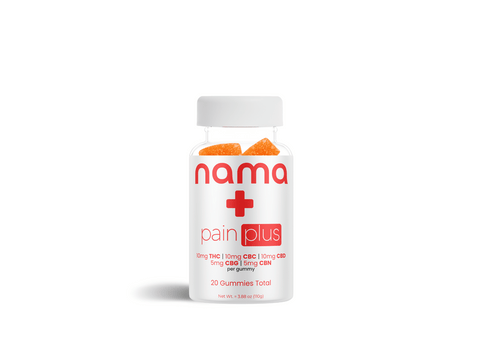

![Euphoria Black Raspberry [10ct]](http://www.namacbd.com/cdn/shop/files/nama_black_raspberry_pouch.png?v=1715285306&width=480)
![Euphoria Black Raspberry [10ct]](http://www.namacbd.com/cdn/shop/files/nama_black_raspberry_nutrition_label.png?v=1715285313&width=480)
![Euphoria Kiwi Raspberry [10ct]](http://www.namacbd.com/cdn/shop/files/nama_kiwi_raspberry_pouch.png?v=1715285056&width=480)
![Euphoria Kiwi Raspberry [10ct]](http://www.namacbd.com/cdn/shop/files/nama_euphoria_kiwiraspberry_nutrition_facts.jpg?v=1715873960&width=480)
![Euphoria Triple Berry [10ct]](http://www.namacbd.com/cdn/shop/files/nama_euphoria_triple_berry_pouch.png?v=1715286095&width=480)
![Euphoria Triple Berry [10ct]](http://www.namacbd.com/cdn/shop/files/nama_euphoria_tripleberry_nutrition_facts.jpg?v=1715873950&width=480)


![Buzz Drops™ [THC Drink Drops]](http://www.namacbd.com/cdn/shop/files/nama_thc_buzz_drops.png?v=1711412866&width=480)
![Buzz Drops™ [THC Drink Drops]](http://www.namacbd.com/cdn/shop/files/buzz-drop-wine-comparison.png?v=1736882023&width=480)
![Buzz Packs™ [THC and CBD Powder Drink Mix]](http://www.namacbd.com/cdn/shop/files/nama_buzz_packs_thc_drink_pack_white_background.png?v=1741884660&width=480)
![Buzz Packs™ [THC and CBD Powder Drink Mix]](http://www.namacbd.com/cdn/shop/files/Buzz_Packs_Label.png?v=1741884660&width=480)
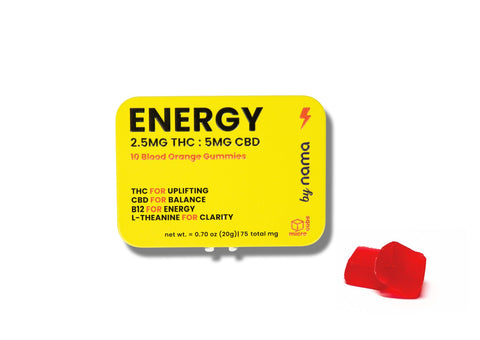




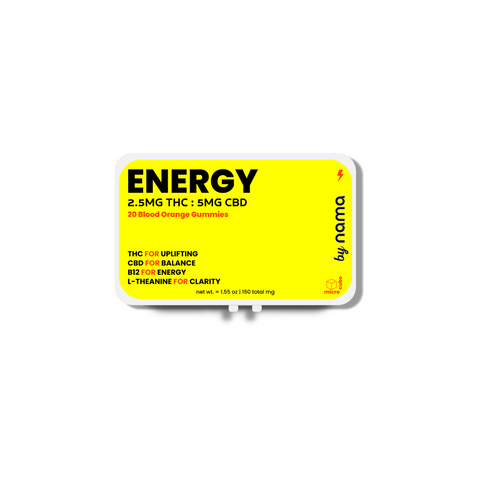

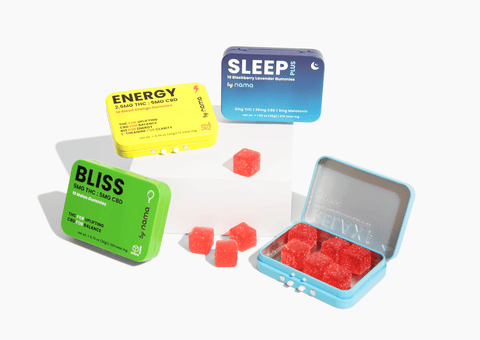
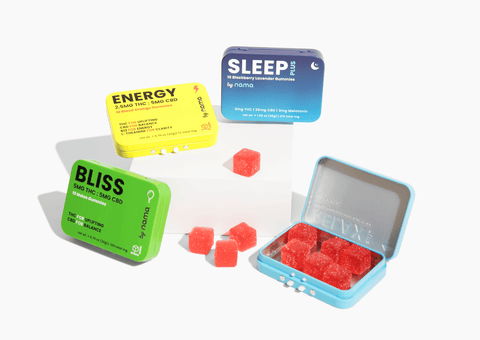
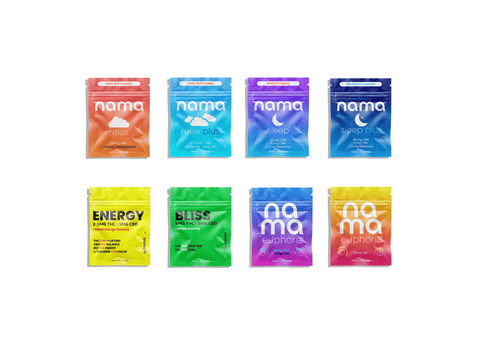





Comments (0)
There are no comments for this article. Be the first one to leave a message!